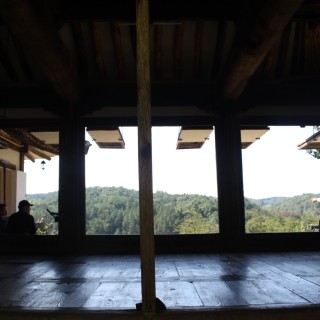About
Andong Gunja Village holds 1000 codices that has historical value
There are about 20 old traditional buildings including the Head House, Shrine, Jusa, and Pavilion in Gunja Village. The annex to the Head House is Hujodang, a designated Important Folklore Material. The signboard hung on the building is Toegye Yi Hwang’s writing. At the back of the Head House is Sungwongak the Heritage Museum. The different kinds of well preserved codices such as anthologies and royal edict written by aristocrats bespeak our past culture, customs and manners. The spacious layout of Takcheongjeong is considered one of the most beautiful private pavilions in Yeongnam region. The classy roof of Takcheongjeong hangs a signboard written by Han Seokbong, a master calligrapher of Joseon. In the living room, there are many other signboards written by Toegye Yi Hwang and other great scholars.
The historic houses hold about 1,000 pieces of codices from Goryeo Dynasty to Late Joseon Period. Suunjobbang written by Kim Yu from Waenae Village contains 121 traditional Andong cuisine recipes including wine brewing recipes. The culinary manuscript is valuable as it describes dietary life and customs of early Joseon period. Gunja Village, a 600-year-old well preserved town through generations, continues to write history until today. Stay overnight with your family and ruminate on the tradition and history at the tranquil historic house.
The designated Important Folklore Cultural Heritage Hujodang sits facing Gunja Village. Hujodang’s porch looks down at the magnificent view of Ocheon-ri Village, while serene breeze carries subtle fragrance of pine trees standing behind the building.
Eupcheongjeong is a pavilion named after Kim Buui’s penname, the scholar of mid Joseon Dynasty, and was built by his teacher Toegye. Eupcheongjeong translates as ‘drink the scenery and purify the heart’.















